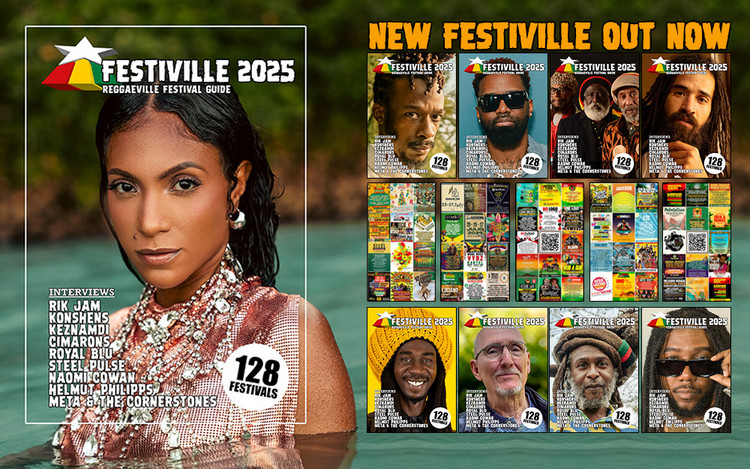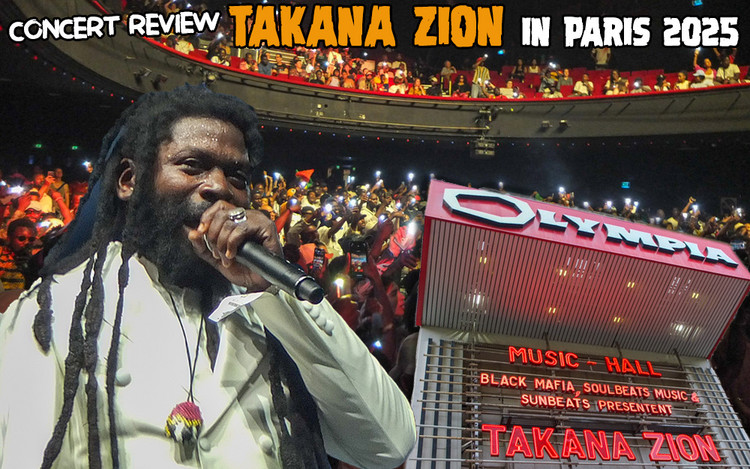Munchy in Ethiopia - The Priceless Cross (Travel Blog #7)
12/15/2015 by Munchy
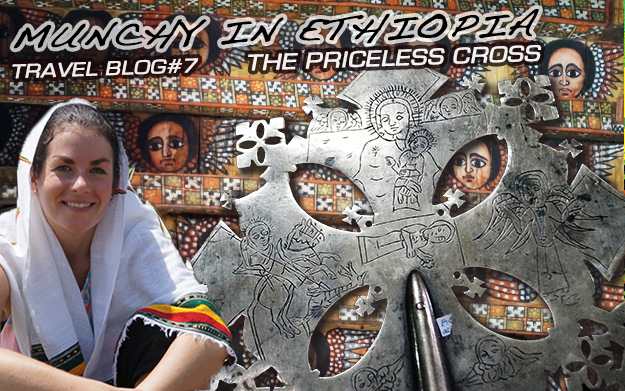
Munchy in Ethiopia - Travel Blog Day 7
CLICK HERE TO VIEW THE PHOTO-BLOG
I still feel a little weak in the knees two days after the history marathon. Wouter left me for hiking the Simien Mountains and I quickly found a new friend, the toilet seat, that I was hugging a lot yesterday. I spare you the details, but good news is, I am up, alive, and ready to move on again to my next destination Lalibela. 25 minutes is the flight time from Gondar and again the landscape is stunning. Highlands and plateaus take turns with canyons and valleys. The land is not that green anymore, different shades of brown alternate through the widths. We land smooth in Lalibela and drive about half an hour from the little domestic airport to the town itself. Only about 25,000 people live here, yet the huge amount of visitors, whether tourists or pilgrims make it a lively, crowded place. On different ranges of hills huts and houses line up, serpentine roads connect the areas of the hilly area. I arrange with the friendly and humble gentleman that picked me up and brought me to my guest house to guide me through the rock-hewn churches the next day, but for now I'm going to take it easy still having the little food poising in mind.
At lunch in a nearby hotel I get to know Dr. Hugh and Catherine Sharp from Glastonbury in England, who have been coming to Lalibela for the past twelve years. They started out as tourists but fell in love with the place and learned about the terrible conditions of the only hospital in the city serving up to 300,000 Ethiopians living in the area with not even one certified doctor. Dr. Sharp, a former GP, and his wife since than have been a major force in raising funds to improve the health, education, and water supply situation in town. At the moment they are working on the maternity unit. Naturally they have amazing stories to share about Lalibela, its people and development, but also good advice to give me on where to eat and how to reach the city center. Strengthened and highly motivated I leave them to explore the place and find a next set of friends very quickly. Students from the High School next door, Robel, a shoe cleaner from the neighborhood, or a hotel manager join me on my walk and make it quite entertaining despite the route being so steep once more (these tourist maps need to start adding some color for altitude, please). Most of our conversations go a little something like this. “Hello” - “Hello” - “How are you?” - “Good, how are you?” - “Where are you from?” - “Germany” - “Berlin or Munich?” - “Munich” - “Oh, Bayern Munich” - “Yeah, best team, right?” - “Yeah, best team!”. Only very few mislead souls beg to differ the last point of the conversation. Everyone's English skills are very good, most likely because all subjects here are taught in English, except for of course Amharic, and everyone appears to be very eager to learn. The little ones never beg for money, but always for pens. Some even chip in a few German expressions in the talk. Every now and then very randomly I end up somewhere on some hill, and as I turn I have the hardest time to believe my eyes as they are permanently wowed by the beauty and width of the surrounding landscape. Hills, behind hills, next to hills, before hills – oh, how I love to see far. 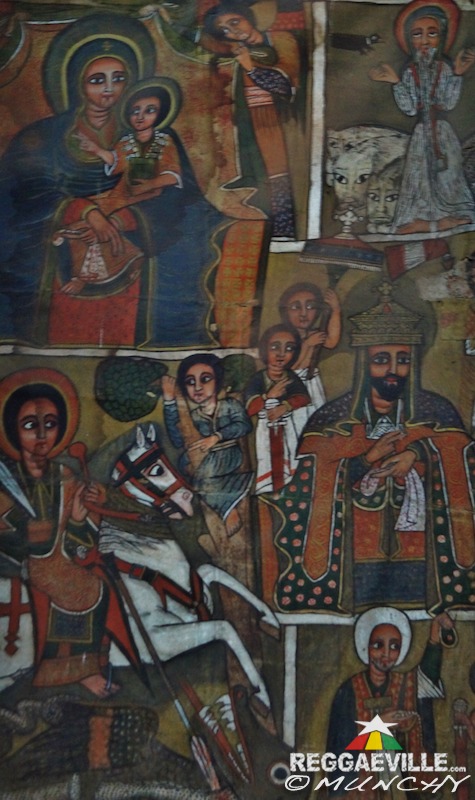 Fully fit again I get up the next morning, ready to meet my guide, but apparently he is running late. I use the meantime to boost myself with some porridge and chai, and eventually find him an hour delayed but smiling and ready. Together we head to the center of the city where the churches are located. A guide is mandatory in Ethiopia's number one tourist destination. The ticket office is crowded already, I take a seat next to a tall guy who makes a sarcastic joke about the seller who uses a calculator to multiply 1,000 Birr times two. I smile, because this comment was so German and turns out, as we engage in a conversation, that the gentleman with the big sunglasses is indeed from my region Bavaria. Dieter Schneider, 56 years old, is just on his way from Wuerzburg in Germany to Cape Town in South Africa – by motorbike! Wow! This promises a lot of fascinating stories. Adding the fact that anything is more fun if you can share the experience with someone, I invite Dieter to join me and my guide. The tour is on me and together we roll. Could it have been destiny that I was an hour late, to run into Dieter?
Fully fit again I get up the next morning, ready to meet my guide, but apparently he is running late. I use the meantime to boost myself with some porridge and chai, and eventually find him an hour delayed but smiling and ready. Together we head to the center of the city where the churches are located. A guide is mandatory in Ethiopia's number one tourist destination. The ticket office is crowded already, I take a seat next to a tall guy who makes a sarcastic joke about the seller who uses a calculator to multiply 1,000 Birr times two. I smile, because this comment was so German and turns out, as we engage in a conversation, that the gentleman with the big sunglasses is indeed from my region Bavaria. Dieter Schneider, 56 years old, is just on his way from Wuerzburg in Germany to Cape Town in South Africa – by motorbike! Wow! This promises a lot of fascinating stories. Adding the fact that anything is more fun if you can share the experience with someone, I invite Dieter to join me and my guide. The tour is on me and together we roll. Could it have been destiny that I was an hour late, to run into Dieter?
Eleven churches are awaiting our visit today. They were all cut from one single Holy Rock by King Lalibela himself, with only the help of some angels. Maybe it was also 40,000 workers, but the legend insists on the king and the angels. Lalibela means “honey eater”. The royal was given the name as a baby when just after his birth a cloud of bees surrounded him. It was in the 12th century when he was living and received the vision to carve the holy buildings from the reddish limestone rock to create a “New Jerusalem”. 900 years later the churches are still in good condition, some now being sheltered from the rain with big shields, others with a little reconstruction here and there. The site is being referred to as the Eighth Wonder of the World. Apart from the ten thousands of tourists it also attract masses of pilgrims every day, who come to pray, study the bible and live in little holes in the outside rock walls.
Every church has its own specialty. Some are monolithic, some semi-monolithic, others resemble caves a lot. The first one to be built, Bete Maryam has colorful frescos on the inside and a fertility pool right outside its door, that has everyone leaving pregnant, who dives into it. The second, Bet Medhane Alem is the largest monolithic church in the world. The massive pillars inside it are smooth and shiny up until about five feet height, because the devoted prayers lean against them and kiss it. Bet Golgotha hosts not just amazing art works but also the tomb of King Lalibela, that I must not see as a woman, but Dieter takes some pictures to show me. Some buildings can be reached through narrow walkways between high stone walls. For others you have to climb hewn stairs or cross bridges. The most exciting path leads through a 50 meter long tunnel in total darkness. It is said to bring you from hell to heaven. Of course we don't cheat, use no torch like the other tourists but just our hands to make our way and protect us from banging our head on the low ceiling. We make it to heaven safe and sound.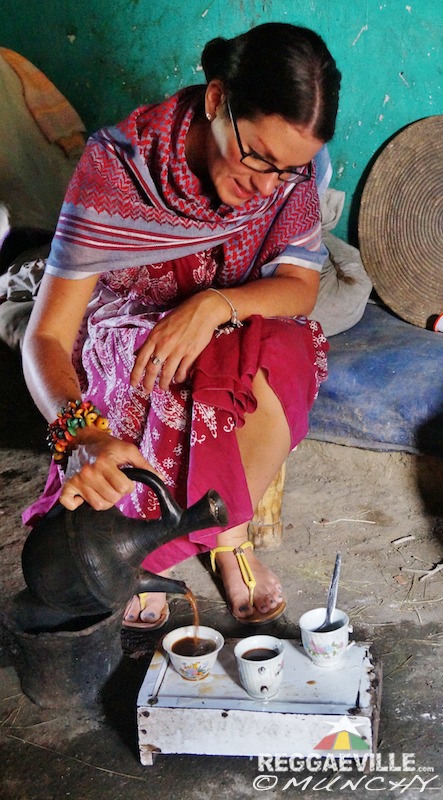 For lunch I introduce Dieter to shiro and injera in a rustic little restaurant that Getu, a youth from the community and friend of our guide brought us to. A coffee would do us well after but they don't have buna there today. Instead we get a way more interesting offer. “You can come and have coffee at my house.” Getu invites us. Coffee sounds great, having it with locals at their home even better, so we gladly follow the teenager. On little winding paths we walk by little huts and clay houses until we reach Getu's home. He has already told his mother that we were coming and she is in full preparation of a traditional Ethiopian coffee. Through the open door we enter the little two room building. The son occupies one, his mom and the grandmother the other, bigger one that we also get to sit down in on a little bench. The place is small and simple, but cozy and cared for at the same time. The walls are painted in bright turquoise, on two flat areas in the corner lie the furs that serve the family as beds. 97-year old grandma is just taking her nap and we sure don't want to wake her, but the others, also Getu's friend Henok insist to wake her – the forenjis are in the house! She seems still very sleepy but is handed a cup of coffee right away. The traditional drink is ready and tastes delicious as always. All of us enjoy the gathering. Dieter shares his previous experiences while driving through the country. Getu shows me his school books and reads to me the history of the Prussian-Austrian war. Just like many of the youths I have met here, he is thirsty for knowledge, ambitious and diligent. Of course, the coffee is for free, but Dieter leaves money with him as he promises to use it to buy school books and we exchange addresses to keep in touch and send an English/German dictionary to them. The welcoming atmosphere is amazing, and we are sure just as excited about meeting the locals as they are having us as their guests. Still we have got to say Good-Bye at some point as we have our tourist agenda.
For lunch I introduce Dieter to shiro and injera in a rustic little restaurant that Getu, a youth from the community and friend of our guide brought us to. A coffee would do us well after but they don't have buna there today. Instead we get a way more interesting offer. “You can come and have coffee at my house.” Getu invites us. Coffee sounds great, having it with locals at their home even better, so we gladly follow the teenager. On little winding paths we walk by little huts and clay houses until we reach Getu's home. He has already told his mother that we were coming and she is in full preparation of a traditional Ethiopian coffee. Through the open door we enter the little two room building. The son occupies one, his mom and the grandmother the other, bigger one that we also get to sit down in on a little bench. The place is small and simple, but cozy and cared for at the same time. The walls are painted in bright turquoise, on two flat areas in the corner lie the furs that serve the family as beds. 97-year old grandma is just taking her nap and we sure don't want to wake her, but the others, also Getu's friend Henok insist to wake her – the forenjis are in the house! She seems still very sleepy but is handed a cup of coffee right away. The traditional drink is ready and tastes delicious as always. All of us enjoy the gathering. Dieter shares his previous experiences while driving through the country. Getu shows me his school books and reads to me the history of the Prussian-Austrian war. Just like many of the youths I have met here, he is thirsty for knowledge, ambitious and diligent. Of course, the coffee is for free, but Dieter leaves money with him as he promises to use it to buy school books and we exchange addresses to keep in touch and send an English/German dictionary to them. The welcoming atmosphere is amazing, and we are sure just as excited about meeting the locals as they are having us as their guests. Still we have got to say Good-Bye at some point as we have our tourist agenda.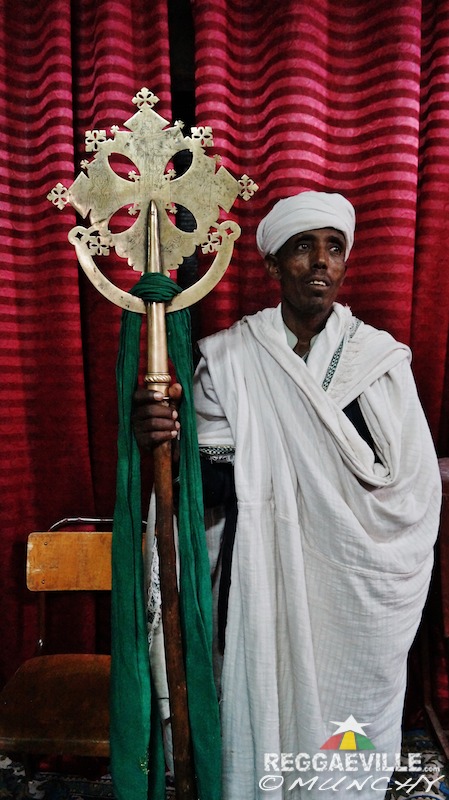 Following the motto of “safe the best for last” we head to Bet Giyorgis, the church of Saint George, that King Lalibela built as the final one. It is the best preserved and also the most famous for its shape of a Greek cross, due to which the 15 meters high building does not need any pillars to stabilize it. The inside is light through windows and holds the churches' treasures in a massive wooden trunk that is also said to be carved by King Lalibela. I wander around the church yard where more baptismal pools are in the ground and again holes in the surroundings walls in which pilgrims rest to pray. And oh, what is this in here? Dead body, dead body! Wow, well, some pilgrims, allegedly from Jerusalem found not just rest, but final rest here. Their mummified corpses lie also in one of the holes. Next time, I try with a little less curiosity, I guess.
Following the motto of “safe the best for last” we head to Bet Giyorgis, the church of Saint George, that King Lalibela built as the final one. It is the best preserved and also the most famous for its shape of a Greek cross, due to which the 15 meters high building does not need any pillars to stabilize it. The inside is light through windows and holds the churches' treasures in a massive wooden trunk that is also said to be carved by King Lalibela. I wander around the church yard where more baptismal pools are in the ground and again holes in the surroundings walls in which pilgrims rest to pray. And oh, what is this in here? Dead body, dead body! Wow, well, some pilgrims, allegedly from Jerusalem found not just rest, but final rest here. Their mummified corpses lie also in one of the holes. Next time, I try with a little less curiosity, I guess.
As the sun sets, the church closes but we decide to stay on the upper edge of the rock, where we have an amazing view of the cross and the width of the land. Slowly the natural light disappears behind the endless mountain ranges and turns the landscape into a golden setting. We rest our tired legs and soak in the spiritual energy we are surrounded by. It's a magical moment and Dieter and I cannot stop smiling and admiring the beauty and power of the place – while my guide and his friend admire my dirty feet. At some point I realized how smooth the rock actually was from the millions of visitors that had come here over the centuries, and I decided to take off my shoes and feel the holy rock on my skin. It was awesome! And saved me from taking the sandals off and back on eleven times.
Just as we exit the church areal to return home, we meet Getu and Henok again. The teenagers who invited us for coffee earlier had been waiting for us to give us a farewell present. Before we know it, they tie a little black thread around our necks with a small wooden cross on it. All along I knew, that I had to get me a cross in Ethiopia to carry home but now I got one that is so much more precious because it comes from new friends, two people who cared for us, opened their home two us, and with the little they have gave us these gifts. No money can buy the most beautiful cross in the world, because this is it, and it's priceless!
Find out about Dr. Hugh and Catherine Sharp's projects @ LALIBELA.org.uk





